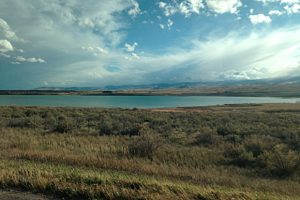What’s at Stake: Adapting to Climate Change

Potential budget cuts are alarming because much of the country is already behind in adapting to climate change, including the Great Plains. Dennis Ojima, director of the North Central Climate Science Center, projects that the region will face a “dramatic increase” in the number of extremely hot days (95°F and higher) and warm nights by mid-century, regardless of any action to curb carbon emissions. The increased heat will affect patterns of rainfall and drought, forcing farmers and ranchers to experiment with growing practices and eventually plant different crops. It will stress existing infrastructure, challenging the reliability of water supplies and electric grids. The sooner managers can get ahead of these changes and begin adapting, the better.
“What’s at Stake: Adapting to Climate Change”
Audubon, November 2017